The first mission of NASA’s ambitious Artemis program produced some beautiful images.
From the moment the 322-foot-tall (98 meters) Space Launch System (SLS) rocket was rolled out to the pad at Launch Complex 39B at NASA’s Kennedy Space Center, the Artemis 1 mission has wowed the world with striking images.
From the bright-as-day nighttime launch of SLS to the close-up shots of the moon’s crater-pocked surface taken by the Orion spacecraft, the photos of Artemis 1 have made this moon mission truly come to life. Join us as we look back through the mission with 10 of the greatest images from NASA’s Artemis 1 mission.
Related: Splashdown! NASA’s Artemis 1 Orion capsule lands in Pacific to end epic moon mission
Live updates: NASA’s Artemis 1 moon mission
1. SLS waits on the launch pad
Some nine days before liftoff, NASA’s Space Launch System rocket stood in the orange glow of a Florida sunset at Launch Complex 39B at NASA’s Kennedy Space Center in Florida.
2. SLS lifts off
Seconds after ignition, SLS begins its journey to the moon on Nov. 16, 2022 as it lit up the night sky with its solid rocket boosters. The ignition of the Space Launch System rocket was so powerful that it damaged its mobile launch platform.
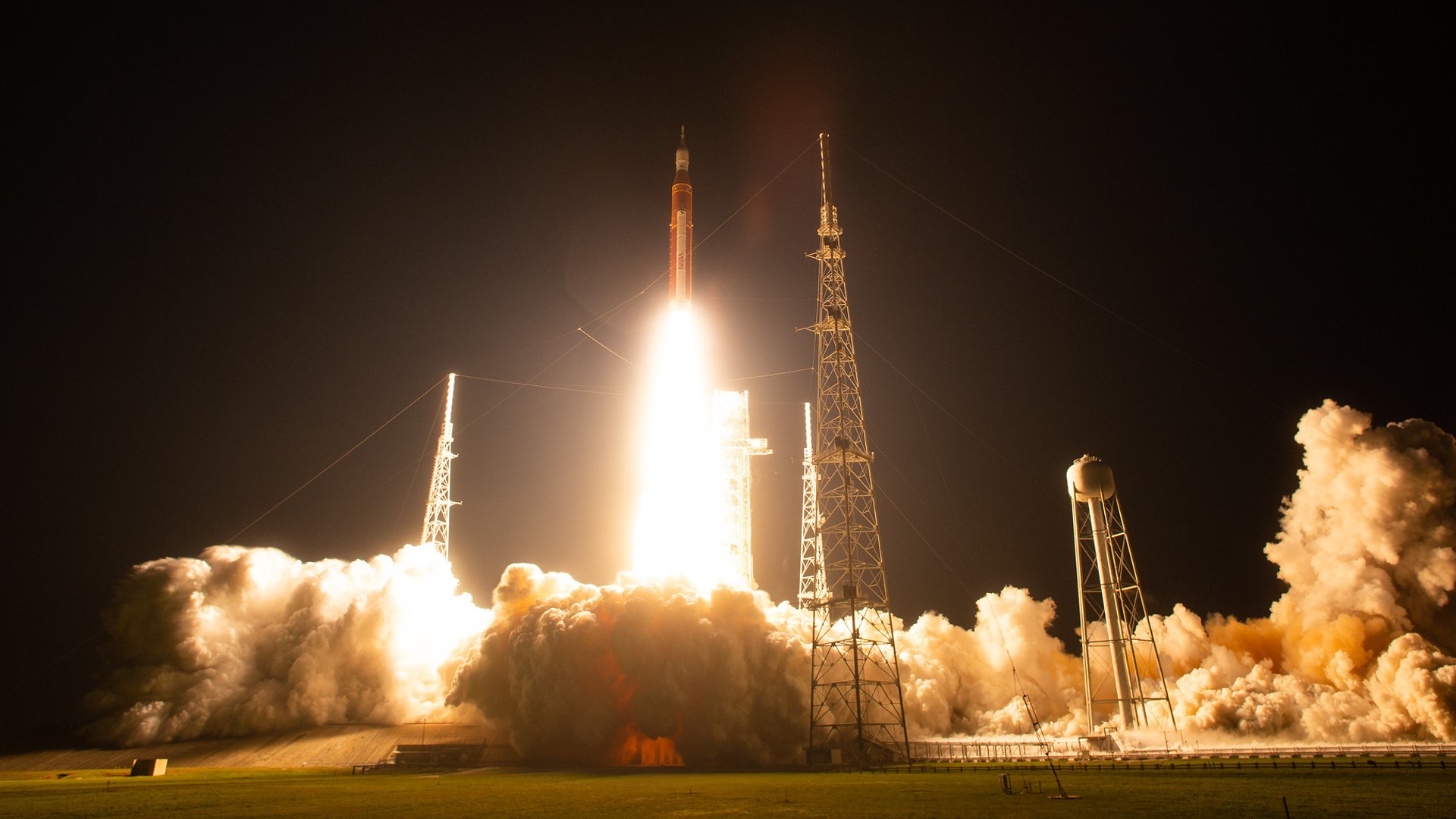
3. SLS joins the moon in the night sky
Roughly a minute after liftoff, SLS’ fiery rocket boosters light up the massive smoke plume left in its wake as the moon can be seen in the distance. At launch, SLS was the most powerful rocket ever to take to the skies successfully, producing 8.8 million pounds (3.9 million kg) of thrust.
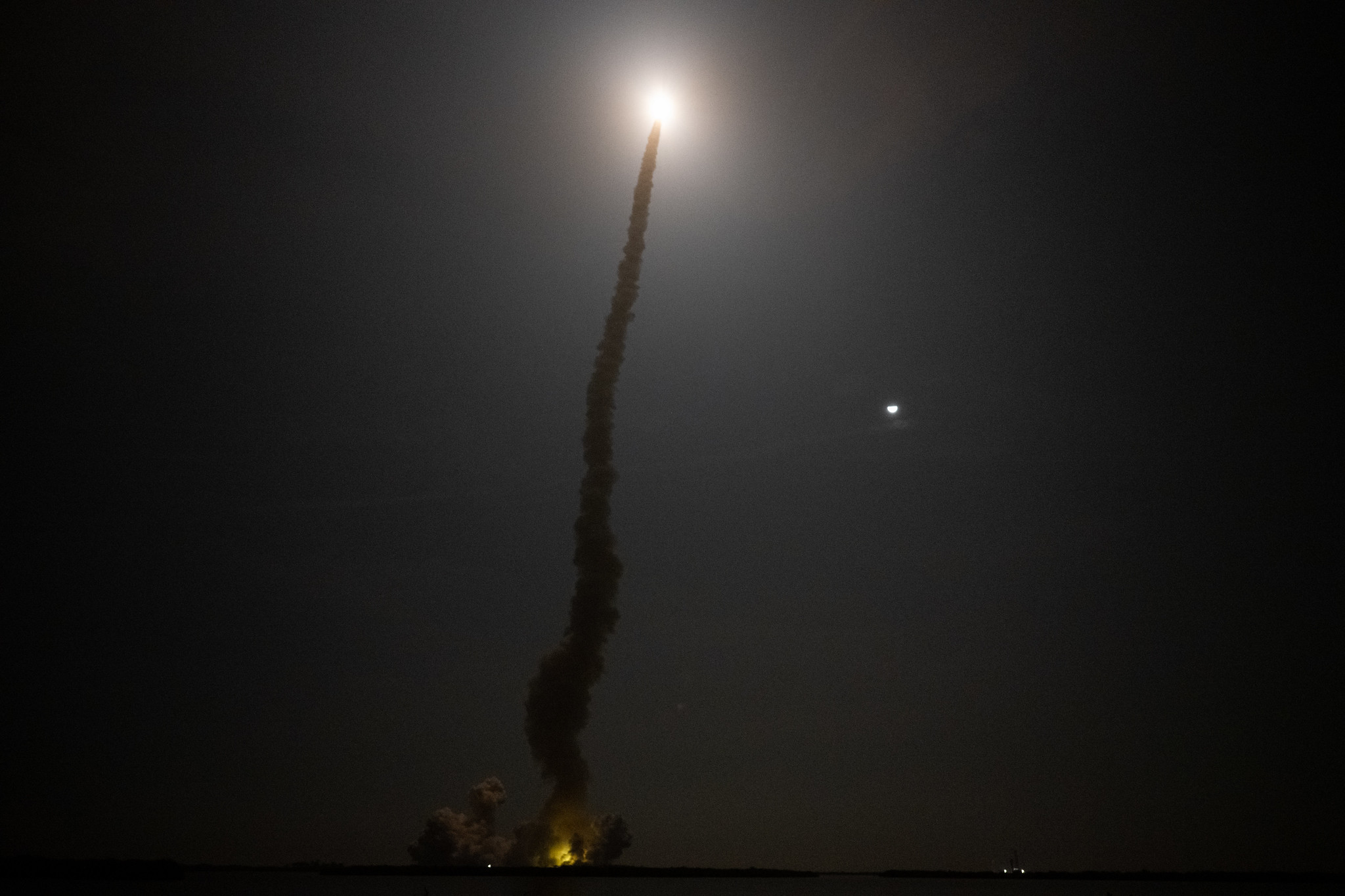
4. Orion’s first picture of Earth
On Nov. 16, 2022, the first day of its mission, the Orion spacecraft captured this view of Earth as seen from deep space. The image was taken by a camera on the tip of one of Orion’s solar arrays while the spacecraft was 57,000 miles (91,732 kilometers) from Earth on the way to the moon.
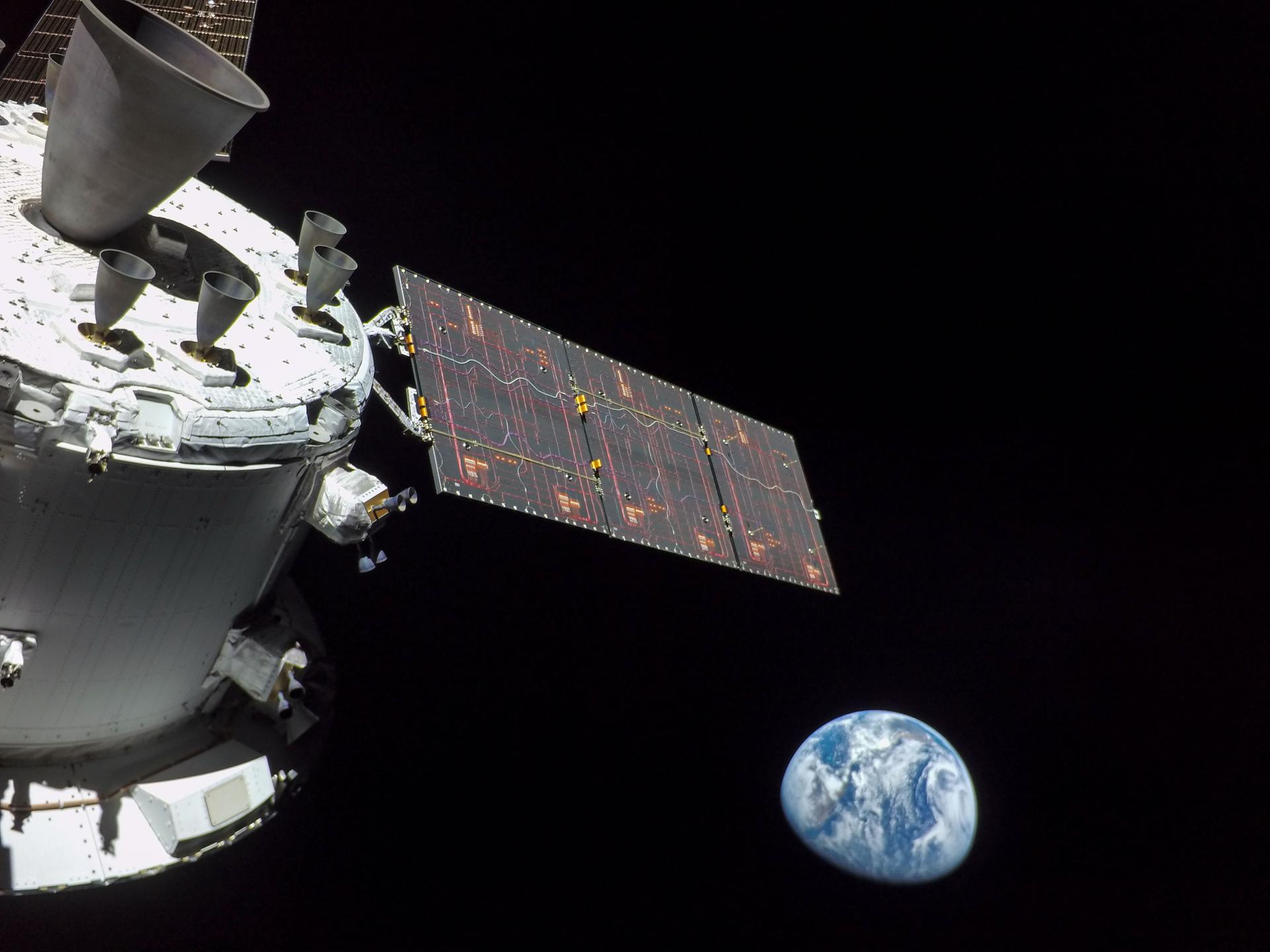
5. Orion breaks distance record
On the 13th day of its mission, Orion reached its maximum distance from Earth at 268,563 miles (432,210 kilometers) away. Orion traveled farther from our planet than any other spacecraft built for humans, breaking the record set by Apollo 13.
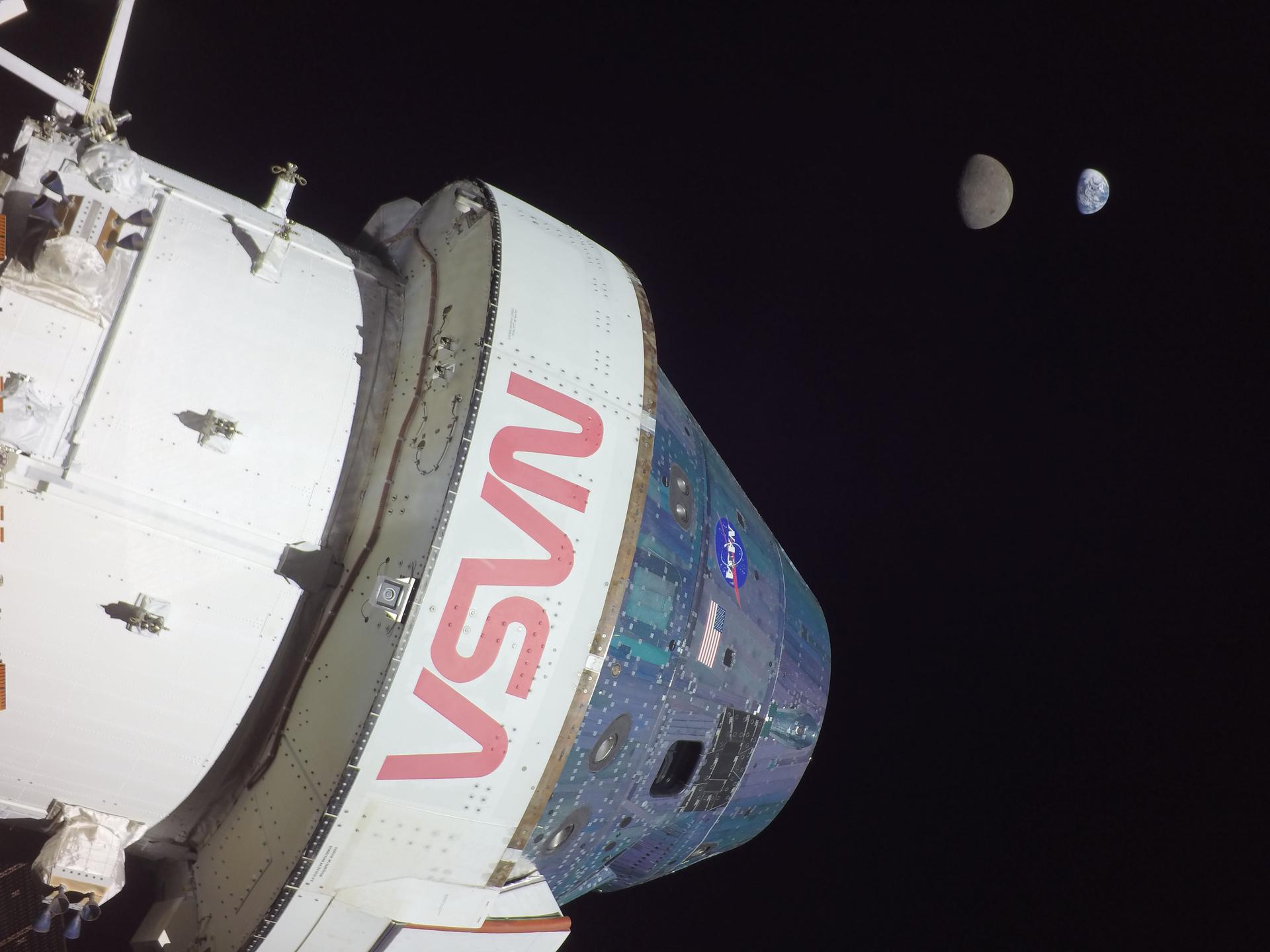
6. Lunar close-up on Flight Day 20
On Dec. 5, the 20th day of NASA’s Artemis 1 mission, Orion captured this close-up of the lunar surface. NASA plans to return humans to the moon’s surface with Artemis 3 no earlier than 2025, placing them near the lunar south pole.

7. Orion looks back at the moon
On Day 21 of its mission, Dec. 5, Orion looked back at the moon following a powered flyby to set the spacecraft on a journey back towards home.
Throughout the mission, Orion used its optical navigation camera to look at Earth and the moon at different phases and distances. These images will help NASA analyze the effectiveness of Orion’s optical navigation system under different lighting conditions in order to inform the system’s use in future missions.
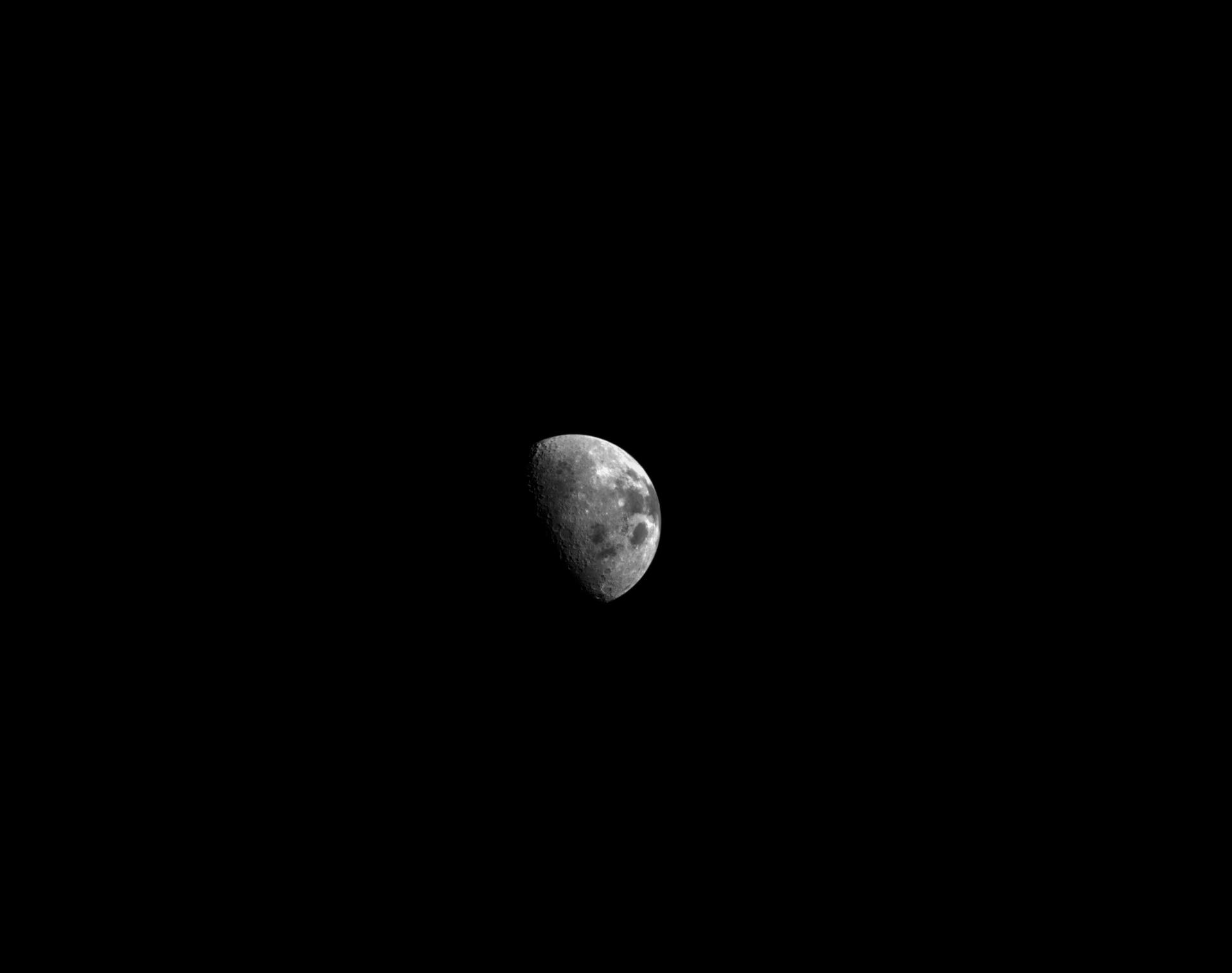
8. Snoopy floats inside Orion
NASA’s zero gravity indicator, a plush Snoopy clad in an orange spacesuit, can be seen floating around the inside of the Orion capsule as the interior of the craft flashes with different colored lights.
Commander Moonikin Campos, a mannequin equipped with sensors to collect data about the radiation environment in deep space, can be seen in the capsule. Campos will inform future Artemis missions on how to best protect human crews from this radiation.
At center is the Callisto payload, a technology demonstrator built by Lockheed Martin in collaboration with Amazon to test voice-activated digital assistant technology aboard Orion.
Read more: Orion’s ‘Easter eggs’ revealed: NASA flew secret messages to the moon on Artemis 1
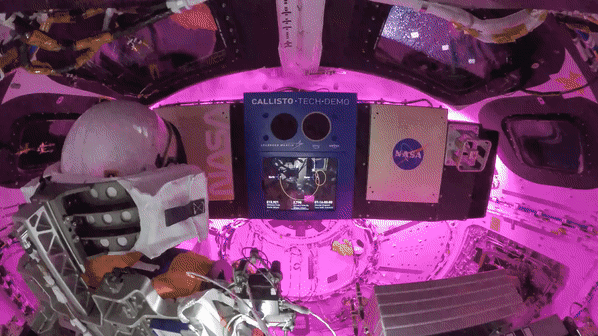
9. Orion gets one last view of Earth
Minutes before the Orion spacecraft reentered Earth’s atmosphere at a blazing speed of 25,000 mph (40,000 kph), it captured one last view of our planet as seen from deep space.
Orion’s heat shield experienced temperatures of 5,000 degrees Fahrenheit (2,800 degrees Celsius) as it reentered the atmosphere, roughly half the temperature of the surface of the sun.
Read more: Here’s how NASA’s Artemis 1 Orion spacecraft will splash down to end its moon mission in 8 not-so-easy steps
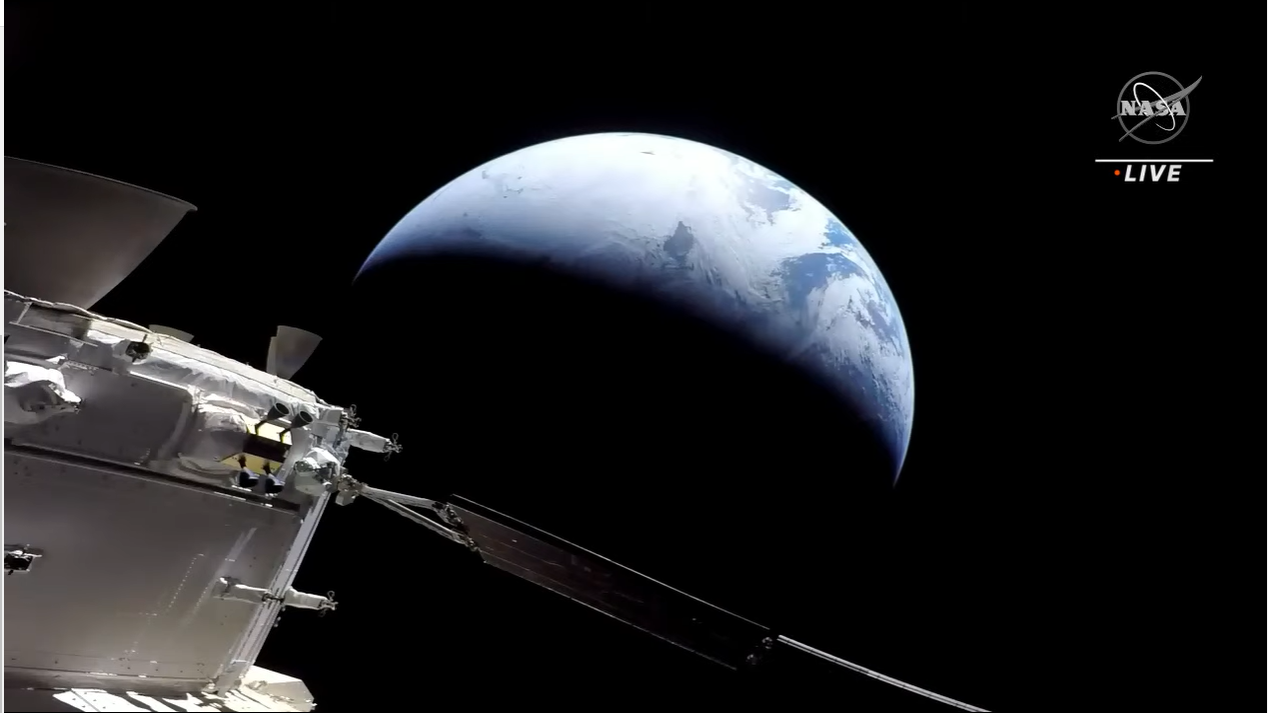
10. Orion splashes down
At 12:40 p.m. EST (1740 GMT) on Dec. 11, Orion splashed down in the Pacific Ocean some 5.8 miles (9.3 kilometers) away from its recovery ship, the U.S. Navy’s USS Portland. NASA described Orion’s landing as a “textbook entry.”
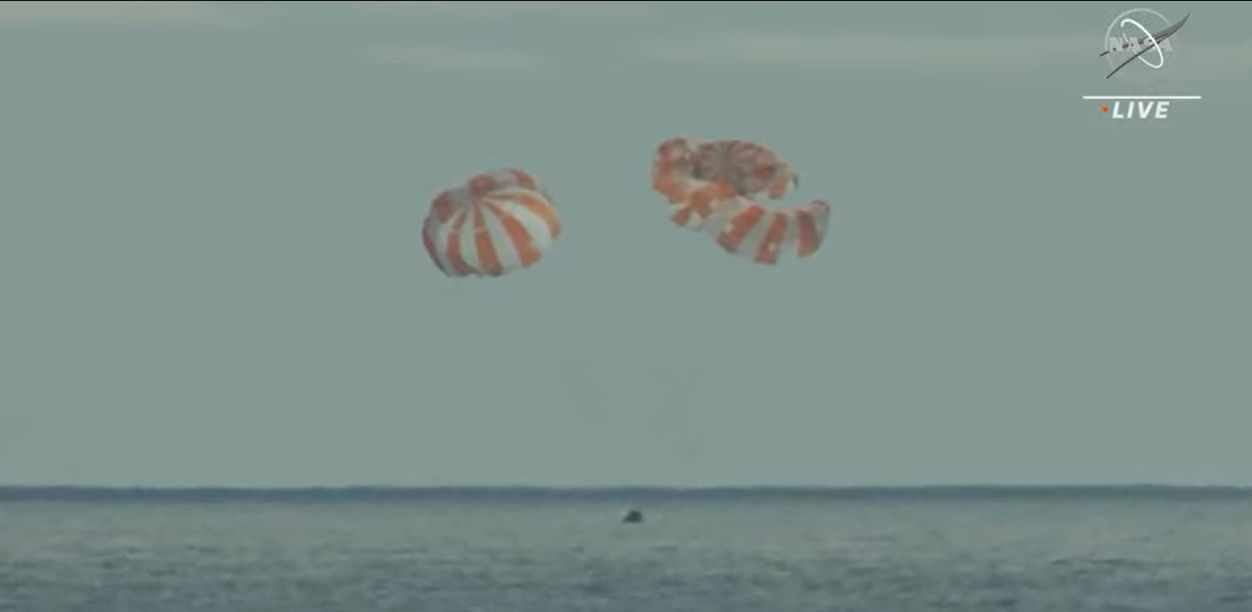
Follow Brett on Twitter at @bretttingley (opens in new tab). Follow us on Twitter @Spacedotcom (opens in new tab) or on Facebook (opens in new tab).

